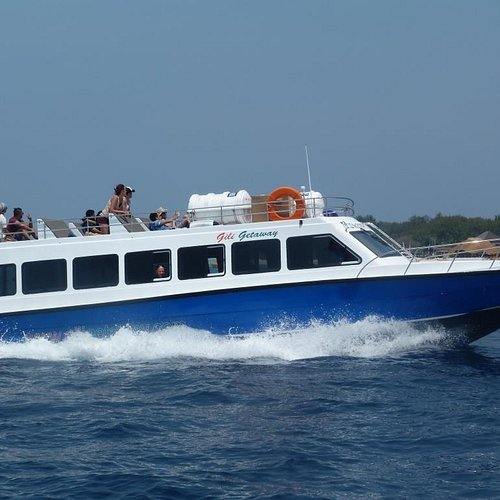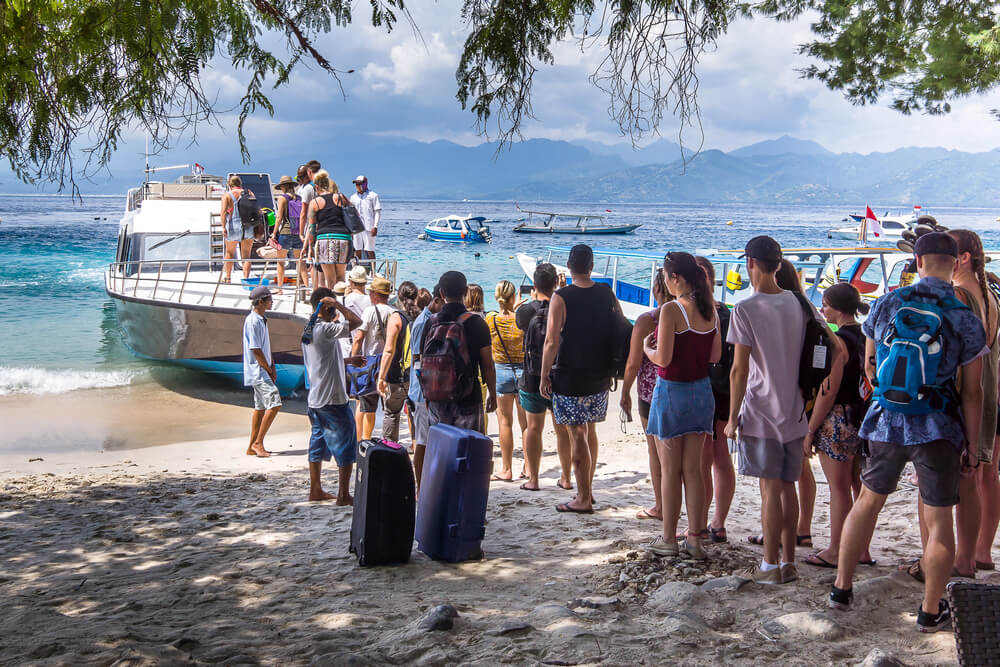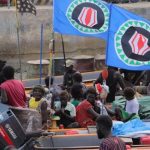While flying might be the most comfortable way to move around Indonesia, taking the ferry is by far the most popular and affordable option for regular people. This is hardly surprising in a country made up of more than seventeen thousand islands. The statistics speak for themselves, with tens of millions of Indonesians using ferries each year compared to the relatively smaller number who fly.
Taking the ferry in Indonesia not only helps you travel on a budget but also gives you a genuine insight into local life. Not all ferry routes or tickets are created equal, though. Comfort levels range wildly, and delays are common. It is important to know your pain threshold before you dive into this part of Indonesian transport.
Here is everything you need to know about taking the ferry in Indonesia and how to do it the YPT way.
History of Taking the Ferry in Indonesia
Indonesia’s ferry network is one of the largest in the world, covering routes that connect over 17,000 islands, from Sumatra in the west to Papua in the east. The main operator is Pelni, a state-owned company founded in 1952, which runs long-distance passenger services across the archipelago. Pelni’s ships are massive, some capable of carrying more than 3,000 passengers along with vehicles and cargo.
The network is vital for Indonesia. Ferries carry millions of people and goods every year, linking remote islands that have no airports or where air tickets are simply too expensive. Many locals depend on these services for work, trade, and family visits. In a country where islands are separated by vast stretches of sea, the ferry system acts as the lifeblood of daily life.
While modern ferries exist, plenty of routes still rely on older vessels that have seen better days. Safety standards have improved since the 1990s, but accidents still happen, often due to overcrowding or bad weather. For most Indonesians, though, the ferry remains an essential part of life rather than a luxury.
A Question of Class
Ferries in Indonesia come with different ticket classes, similar to trains or planes. Here is what to expect:
- Economy Class – The cheapest and most crowded. Think benches, mats, and families camping on deck.
- Business Class – A step up with assigned seats and air conditioning, though still basic.
- Cabins or VIP Class – Offers small private rooms with bunks, often used by families or tourists wanting peace.
- Vehicle Deck – For those bringing scooters or small cars, often full of traders and delivery vehicles.
Your comfort depends on how much you pay. If you want the true local experience, economy class is where you will find it.
Oh and dont forget Indonesian food is pretty bad, so dont expect much regardless of class.

How to Book a Ferry Ticket in Indonesia
You can buy ferry tickets at the port, through travel agents, or online. For long-distance passenger ferries, the main operator is Pelni. Shorter routes and car ferries are handled by ASDP Indonesia Ferry.
If you prefer using travel booking sites, English-friendly options include Traveloka, Tiket.com, and Ferry.id. These platforms allow online payment with international cards, making it easier for foreign travelers.
Prices vary depending on distance and class. A short ferry from Java to Bali costs around 2 to 4 USD. Mid-range routes like Lombok to Sumbawa cost 5 to 10 USD. Longer Pelni routes, such as Jakarta to Ambon or Papua, cost between 30 and 100 USD depending on whether you take economy, business, or a cabin.
Schedules can change due to weather or maintenance, so always check in advance. Arrive at the port early, especially if you are bringing a vehicle, as boarding can be chaotic.
Thew follwing sites can be used to nook tickets (in theory)
Websites for booking:
Pelni long distance passenger ferries www.pelni.co.id
ASDP Indonesia Ferry short routes and car ferries www.indonesiaferry.co.id
Traveloka www.traveloka.com
Tiket.com www.tiket.com
Ferry.id www.ferry.id
Most Iconic Ferry Routes
Indonesia’s ferry network spans thousands of routes, but a few stand out as must-do journeys.
Java to Bali (Ketapang to Gilimanuk) is the busiest route, taking under an hour and connecting Java’s industrial heart to Bali’s tourism hotspots.
Padangbai to Lombok is popular with backpackers heading east from Bali. The crossing takes around four to five hours and can be rough in bad weather, but the scenery of small islands and turquoise waters is worth it.
Makassar to Ambon is one of Pelni’s great long-distance voyages through the Spice Islands, lasting multiple days and providing a vivid sense of Indonesia’s size and diversity.
Surabaya to Banjarmasin on Kalimantan is a working route that connects Java to Borneo, showing trade and local life in action.
Labuan Bajo to Flores and Komodo is arguably the most scenic route, passing volcanic islands and turquoise seas. It is also the main gateway to see Komodo dragons.

International Routes
ndonesia is not just about planes and buses. Its maritime arteries connect the archipelago to the wider region, and if you want to travel like a local adventurer, ferries are the way to go. Here’s the rundown on the main international routes you can actually use.
Batam – Singapore
This is the busiest and most convenient international ferry route in Indonesia. Multiple operators run high-speed ferries from Batam’s Harbour Bay and Sekupang terminals to Singapore’s Tanah Merah Ferry Terminal. Travel time is around 45 to 70 minutes depending on the service. Tickets are inexpensive, and ferries are frequent, making this ideal for short crossings or day trips.

Batam – Johor Bahru
A lesser-known but useful route connects Batam to Johor Bahru in Malaysia. Ferries depart from Batam Centre and Harbour Bay and arrive at Puteri Harbour. The journey is roughly 70 minutes to 90 minutes. This route is perfect for travelers wanting to bypass Singapore and go directly into Malaysia.

Bintan – Singapore
Bintan Island is a short hop from Singapore, with ferries departing from Bandar Bentan Telani and Bintan Lagoon Marina. Travel time ranges from 55 minutes to just over an hour. This route is popular with tourists heading to Bintan’s resorts but is also practical for crossing into Singapore efficiently.
Batam – Malaysia (Port Klang)
Some operators run longer ferries from Batam to Port Klang, near Kuala Lumpur. The journey is longer, taking approximately 6 to 7 hours, and services are less frequent. This is mostly used for freight or by travelers who want to combine their sea crossing with a bit of sightseeing along the coast.
Batam – Tanjung Balai Karimun – Malaysia
This is a shorter Malaysia-bound route from Batam, typically to small ports like Tanjung Balai Karimun, which then connects onward to Malaysia’s Riau Islands and Johor. It’s slower and more utilitarian than the Singapore crossings, but it gives a taste of real regional ferry travel away from the tourist route.
Kupang (Timor) – Dili, Timor Leste
For those venturing to the eastern edge of Indonesia, ferries link Kupang in West Timor to Dili, the capital of Timor Leste. The journey is a few hours depending on the vessel. This is less about luxury and more about adventure, giving a glimpse of the rugged Timor Sea and cross-border travel in Southeast Asia.

Pontianak – Kuching, Malaysia (Seasonal)
Occasionally, smaller ferries operate between Pontianak in West Kalimantan and Kuching in Sarawak, Malaysia. These are not daily services and are often used for trading or by locals. The crossing takes several hours and requires patience, but it’s one of the few ways to get from Kalimantan to Malaysian Borneo by sea.
Nunukan – Tawau, Malaysia
In North Kalimantan, the Nunukan to Tawau route connects Indonesian Borneo to Malaysia’s Sabah state. Ferries run daily, taking between 2 to 3 hours. This is popular with traders and Indonesians crossing for work or shopping in Sabah.
Conclusion
So, while taking a ferry in Indonesia is far away not for everyone, it is still iconic and about as South-East Asian adventure as it gets.
YPT offer ferry trips on some of our groups tours, as well as bespoke trips to Indonesia.





